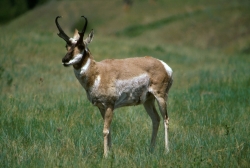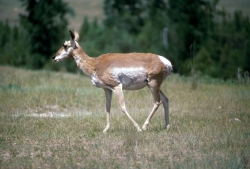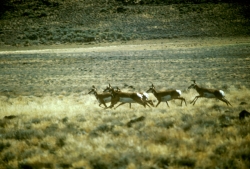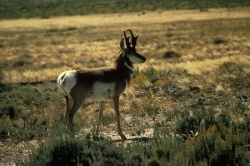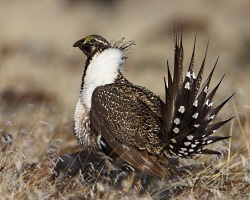
Courtesy US FWS
Stephen Ting, Photographer
As Robert Frost famously wrote in his poem, Mending Wall, “Good fences make good neighbors”.
Fences keep livestock from crops, children from traffic and delineate boundaries. In the intermountain West, fences are important to keep livestock where we want them and away from where we don’t. But wildlife of open sagebrush habitat did not evolve with fences. Sage Grouse and Pronghorn Antelope have had a particularly difficult time adapting.
Sage Grouse are stout, chicken-like birds found only in sagebrush, whose foliage features prominently in their diet. Sage Grouse were once abundant, but their numbers have plummeted due to habitat loss. Today they are candidates for listing as an endangered species. In flight, these large bodied birds like to skim over the sagebrush canopy and so doing, careen right into fences. One Utah study attributed 1/5 of Sage Grouse deaths to fence collisions.
[Kevin Colver recording: https://wildstore.wildsanctuary.com/collections/special-collections]

Courtesy US FWS
James C. Leupold, Photographer
At dawn during the spring, male Sage Grouse congregate on ancestral dancing grounds to attract mates. The birds fly to these lek areas before sunrise so may not be able to see a fence before they collide. Other areas of special concern include the crest of low hills and the midst of wide open flats. Where grouse are common, flagging a fence or otherwise making it more visible can help considerably to reduce airborne fence collisions.
For Pronghorn Antelope, however, the top of the fence is not the issue. They are the swiftest game animal in North America. As with bison, market hunting in the 19th century decimated their populations. This trend has reversed, but here also, fences are a problem. Pronghorn are sprinters, not hurdlers and rarely jump a barrier over 3 feet tall. They choose to go under or through fencelines. A simple solution for barbed wire fences is to string smooth wire for the bottom strand at least 18 inches above the ground. This simple fence fix enables pronghorns to scoot below the fence unscathed as they migrate between winter and summer grounds
The perspective of Pronghorn Antelope and Sage Grouse could be summed up in the lyrics from a Cole Porter song: Don’t fence me in.
This is Linda Kervin for Bridgerland Audubon Society.
Credits:
Photos: Courtesy US FWS: Images.fws.gov
Audio: Kevin Colver, https://wildstore.wildsanctuary.com/collections/special-collections
Text: Linda Kervin, Bridgerland Audubon Society
Additional Reading:
Resources:
Lives of North American Birds. Kenn Kaufman. 1996, Houghton Mifflin Company., https://www.amazon.com/American-Peterson-Natural-History-Companions/dp/0395770173
Don’t Fence Me In: If sage-grouse had a song it would be “Don’t Fence Me In”, USDA Natural Resource Conservation Service, https://www.mt.nrcs.usda.gov/technical/ecs/biology/sagegrouse/dontfence.html
Safer Fencing Can Help Save Western Birds, Environmental Defense Fund, https://www.edf.org/article.cfm?contentID=9126

